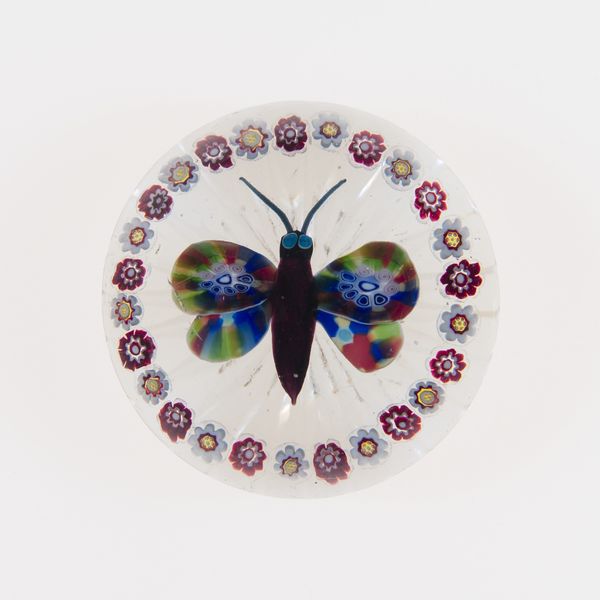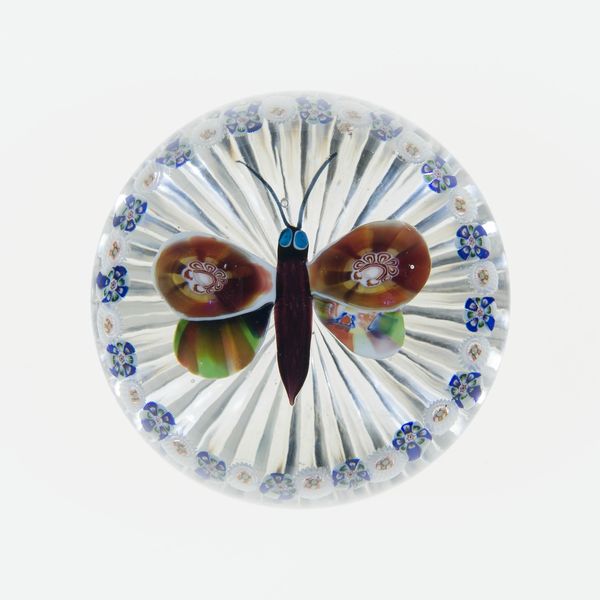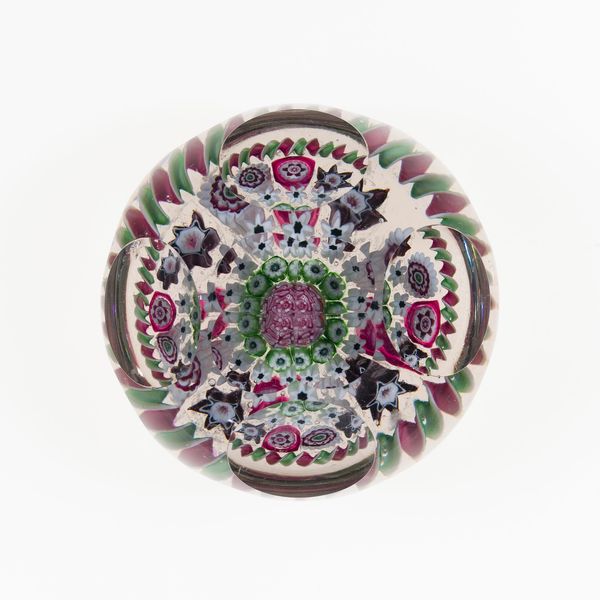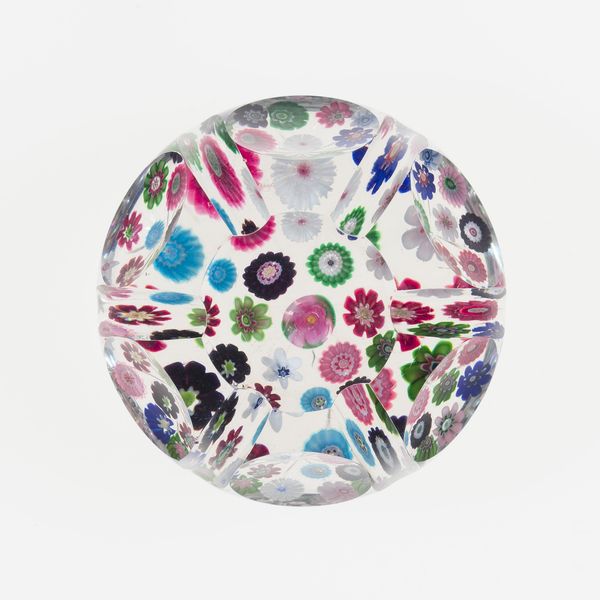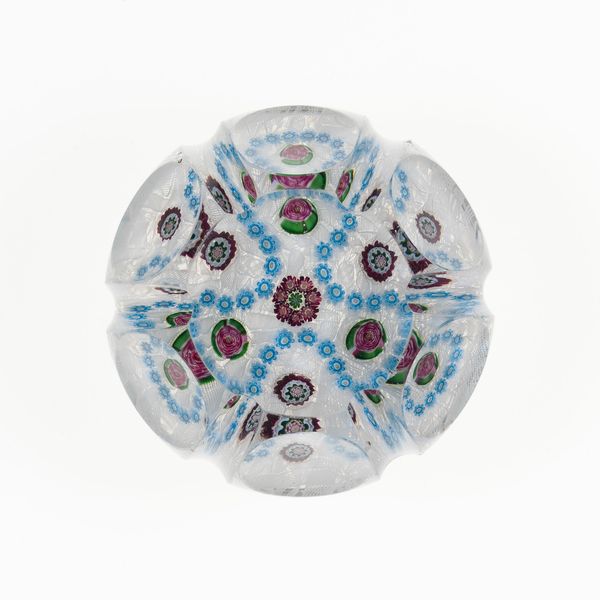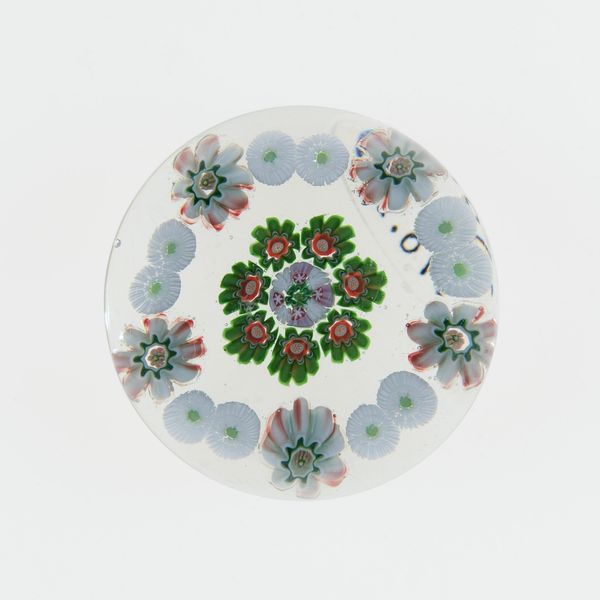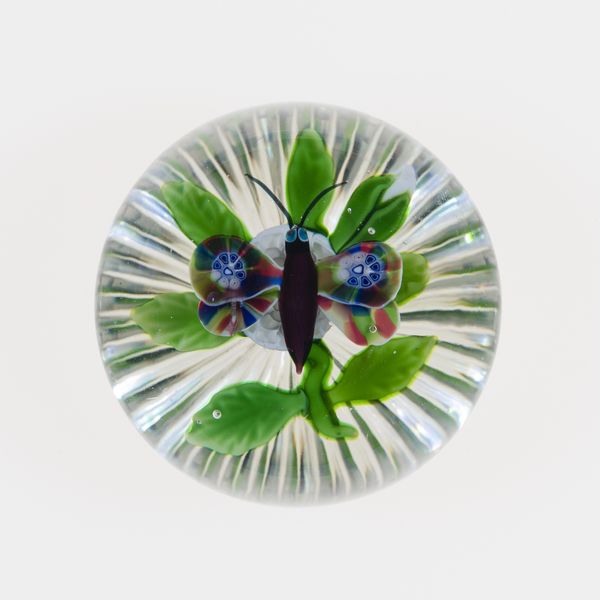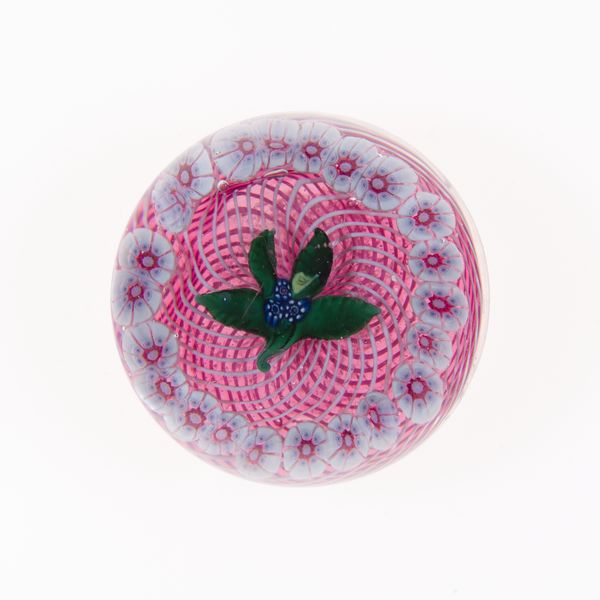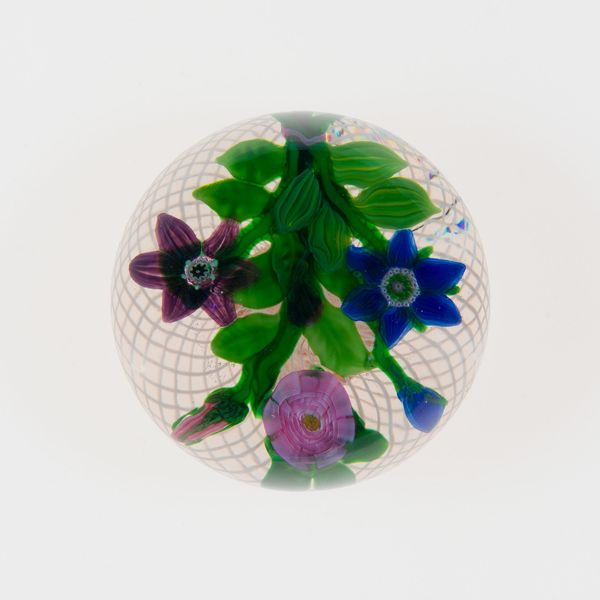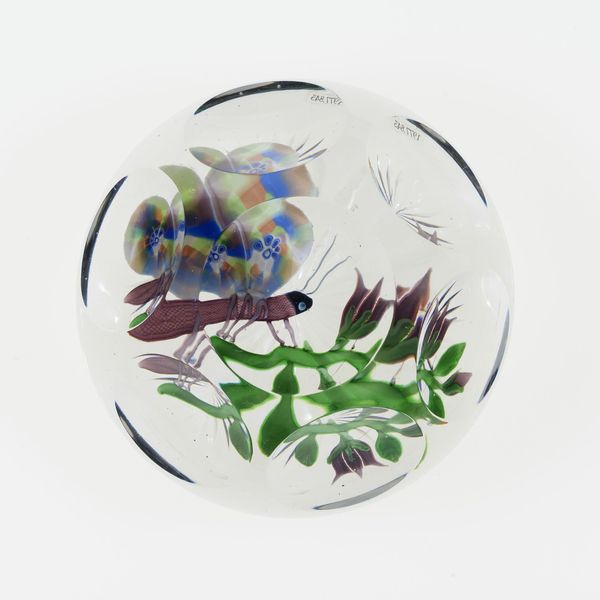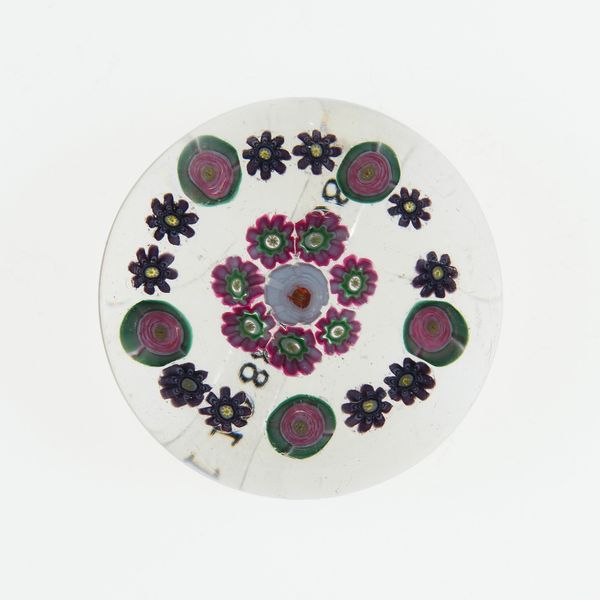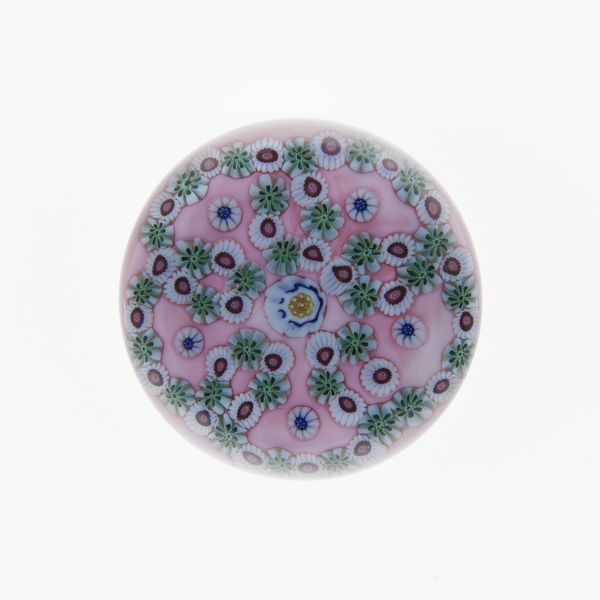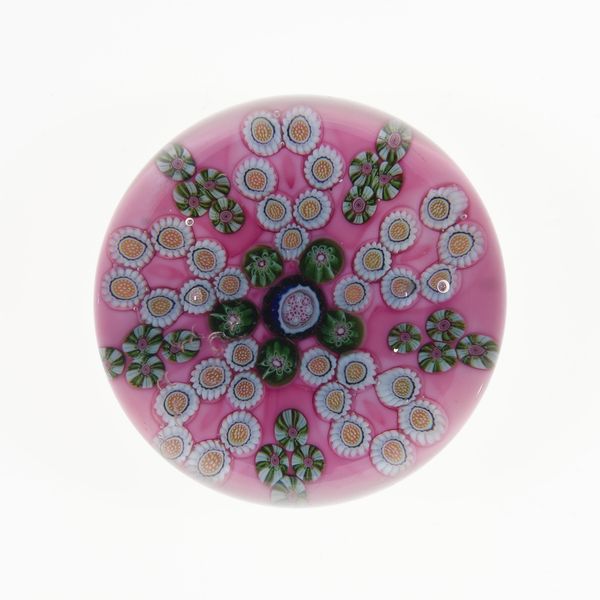
glass
#
glass
#
decorative-art
Dimensions: Diam. 7.6 cm (3 in.)
Copyright: Public Domain
Curator: This intriguing glass paperweight, currently residing at The Art Institute of Chicago, was crafted by Baccarat Glassworks around 1845 to 1860. Editor: My first thought is of a contained kaleidoscope. All that intense color and patterned beauty held captive within clear, heavy glass. It feels both precious and a little melancholy. Curator: Precisely. We see that tension play out often in 19th-century decorative arts. Note the millefiori technique employed in creating the butterfly's wings and the surrounding floral garland. Each tiny element was individually crafted, likely by different glassworkers specializing in particular components. Editor: It makes you wonder about those individual artisans. Were they even considered "artists" at the time, or simply factory workers fulfilling an industrial process? Each of those flowers, so tiny, each requiring skilled labor... Curator: That’s the key question here: how blurred were the boundaries between art and craft at that time? Paperweights like these were luxury goods, yes, but also products of factory production, highlighting a democratization of access to beautiful objects while obscuring the often difficult labor conditions. Editor: Right, they become beautiful little symbols of consumption, tiny capitalist dreams. Yet, look at the colors. The blues, greens, and reds swirling within the butterfly's wings. The maker imbued it with an incredible vitality, a life that transcends its function as a mere paperweight. There’s almost a hopeful rebellion baked into it, against that mass-production label you speak of. Curator: A delicate rebellion contained. The clear glass amplifies the colors, yet simultaneously imprisons the butterfly, underscoring that relationship between luxury, labor, and confinement within the burgeoning industrial age. Editor: It makes me want to smash the glass, release the butterfly, and return those vibrant colours back into the hands of the maker. I know, overly romantic... Curator: But isn't that romanticism what makes these objects enduring? Their capacity to spark not just visual delight, but also critical reflection on the world that produced them? Editor: Yes, that perfectly bottled tension is exactly what holds my gaze!
Comments
No comments
Be the first to comment and join the conversation on the ultimate creative platform.
